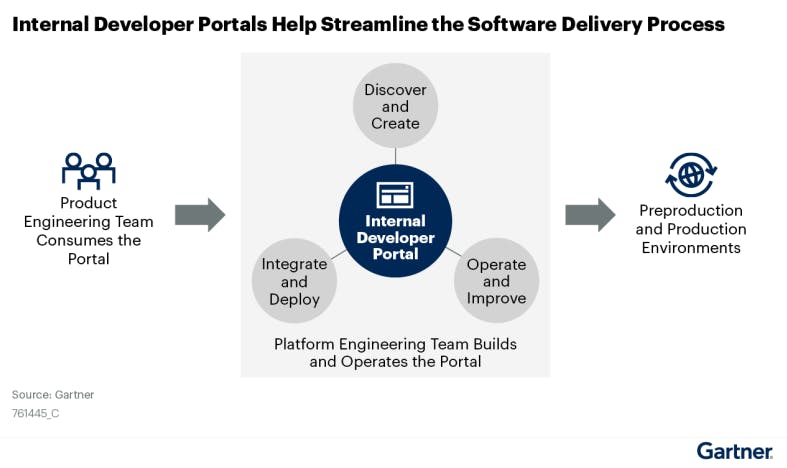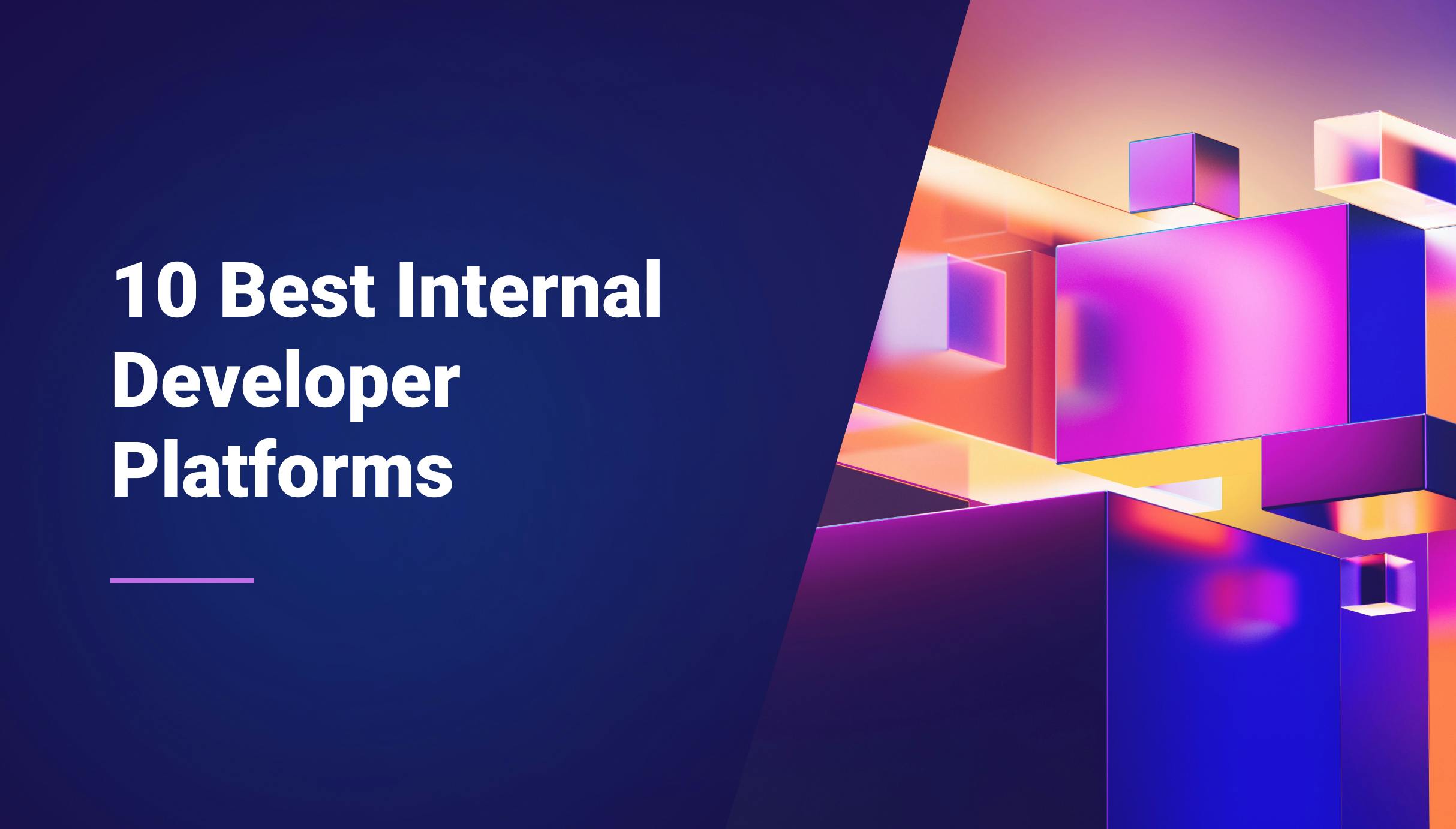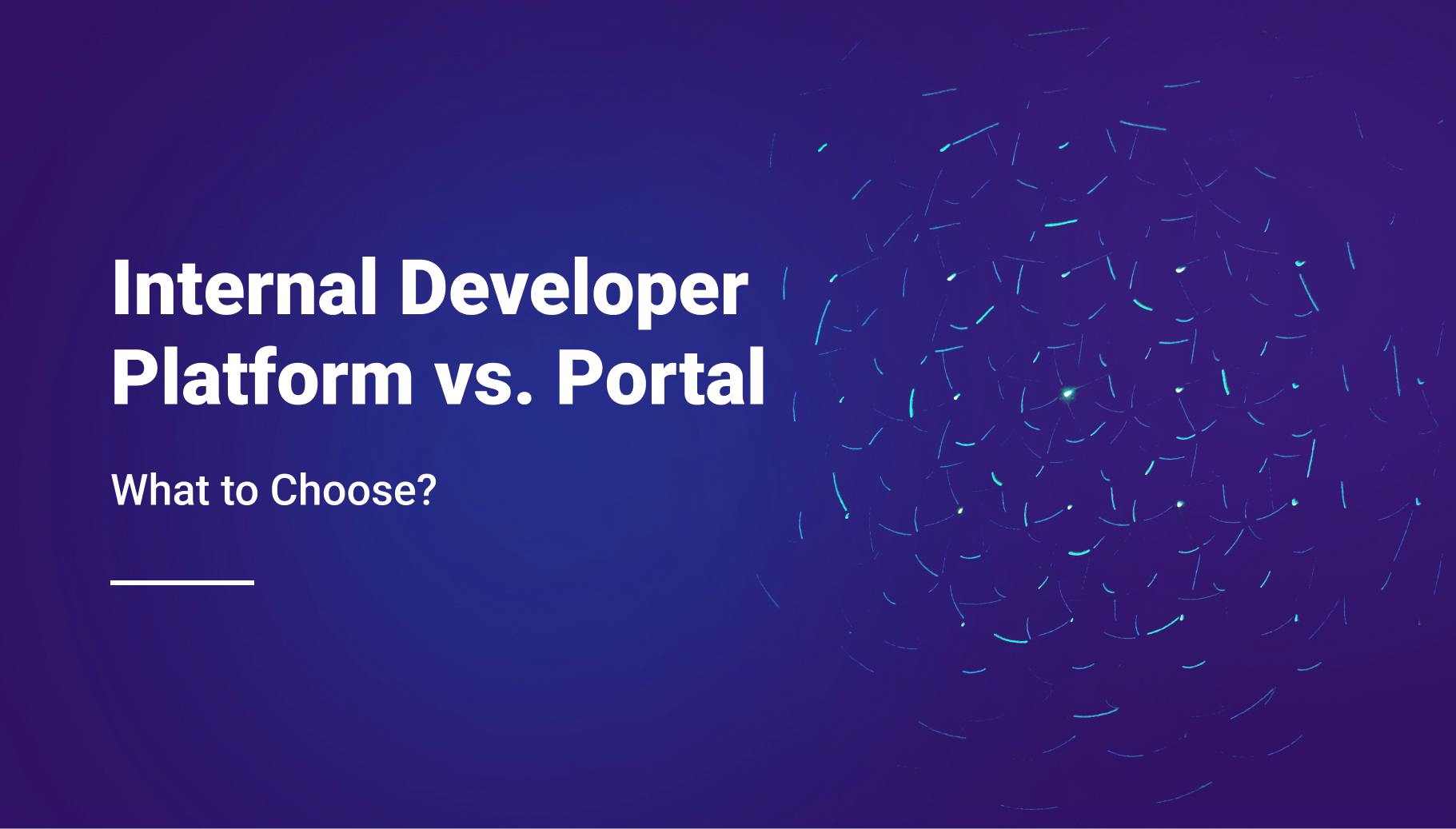What is an Internal Developer Portal?
Imagine a central hub where your tech team finds all the tools and resources they need, organized and ready for action. This is exactly what the Internal Developer Portal offers, becoming a key factor in revolutionizing the way we build software today. In this article, we will explore how Internal Developer Portals revolutionize the development process by streamlining tasks, boosting collaboration, and customizing workflows. Get ready to discover how this powerful tool can drive your team's efficiency to new heights. Internal Developer Portal to be

Morgan Perry
January 9, 2024 · 7 min read
#What is an Internal Developer Portal?
An Internal Developer Portal is a unified all-in-one application designed exclusively for an organization's development team. This portal serves as a one-stop platform, offering various tools and resources necessary for software development. It's tailored to suit the specific needs and workflows of the company's developers, ensuring they have quick and easy access to everything they need. The portal typically includes access to APIs, code repositories, documentation, and support resources, streamlining the development process.

#Main Features of an Internal Developer Portal
Here are some core features of an internal developer portal.
- Centralized documentation: Provides a single source for all development-related documents, including API guides, coding standards, and best practices.
- Access to tools and resources: Offers easy access to various development tools, libraries, and frameworks essential for the development process.
- Collaboration and communication tools: Integrates platforms for team collaboration, enabling developers to communicate and work together efficiently.
- Project management integration: Links with project management tools to track progress, manage tasks, and align development activities with business objectives.
- Customization and personalization: Allows developers to customize the portal according to their needs, enhancing productivity and user experience.
For further insights into what sets apart the best internal developer portals, check out our article 10 best Internal Developer Portals. This will give you a broader perspective on the variety and capabilities of top Internal Developer Portals.
#How Internal Developer Portals Facilitate and Streamline the Development Process
Internal Developer Portals streamline the development process by:
- Improving access to resources: By centralizing resources, developers spend less time searching for information and tools, leading to increased efficiency.
- Enhancing collaboration: Facilitates teamwork by providing a shared space for communication and project tracking.
- Standardizing processes: Helps in maintaining consistency in development practices across the team, reducing errors and misunderstandings.
- Supporting continuous learning: Acts as a learning platform, offering tutorials, guides, and updates on the latest technology trends relevant to the team.
- Customization for efficiency: Tailored to the specific needs of the team, it ensures that developers have exactly what they need at their fingertips, reducing unnecessary complexity.

#Use Cases and Applications of Internal Developer Portals
#Various scenarios where Internal Developer Portals are beneficial
Some of the use cases where internal developer platforms are ideal:
- When you need centralized resource management
These portals create a single point of access for all development resources, tools, and documentation. This centralization streamlines the resource management process, making it easier for developers to quickly find and utilize the resources they need, enhancing efficiency and reducing time wastage. - When you are looking for standardization of development practices
Internal developer portals ensure consistent use of coding standards, templates, and best practices across the organization. This standardization helps maintain quality and uniformity in development projects, aiding in smoother project execution and easier maintenance. - When customized developer experience is needed
Internal developer portals offer customization capabilities that allow teams to tailor the platform according to their specific project needs and workflows. This flexibility ensures that diverse teams can optimize the portal to suit their unique requirements, improving productivity and user satisfaction.
#Some Case Studies:
- Tech giant example: By implementing an internal developer portal, a leading technology company streamlined its project management and development processes. The portal featured automated code review tools and integrated testing environments, leading to a more efficient development cycle and a 30% increase in project delivery speed. Furthermore, the inclusion of a comprehensive knowledge base improved code quality and provided developers with easy access to crucial information, contributing to a more robust and error-free development process.
- Financial services firm: A global financial services firm utilized its internal developer portal to manage the complexities of compliance and regulatory requirements. The portal offered easy access to updated legal guidelines, security protocols, and audit tools. This centralized approach ensured that all development work adhered to the latest industry standards and regulatory norms, significantly reducing compliance-related risks and improving the firm's ability to swiftly adapt to new regulations.
#Implementing an Internal Developer Portal: Best Practices and Strategies
#Guidelines for Successfully Implementing an Internal Developer Portal
Below, we have compiled some of the guidelines to ensure that your internal developer portal meets your business and technical needs.
- Define objectives: Clearly articulate goals aligned with organizational needs, ensuring relevance.
- User-friendly design: Tailor the portal to meet the specific requirements and preferences of developers.
- Cross-department collaboration: Work with various departments to integrate a wide range of insights and requirements.
- Executive sponsorship: Obtain backing from top management to establish a supportive culture for the portal.
- Focus on scalability: Design the portal to be adaptable and capable of evolving with the organization's growth and changing needs.
#Integration with Existing Tools and Systems
An Internal Developer Portal cannot work in silo, it needs integration with other tools to function successfully. Below are some of the key points you need to keep in mind when integrating it with other developer tools.
- Identify key platforms: Connect with critical existing systems like version control, project management tools, and internal communication channels.
- Ensure compatibility: Facilitate seamless access to important resources and information through the portal.
- Centralize information: Aim to create a unified information hub, reducing the risk of creating isolated information silos.
- Regular updates: Continually update the portal to maintain alignment with the latest tools, technologies, and organizational practices.
#Tips on Ensuring Adoption and Continuous Improvement
Let’s go through some of the tips and tricks on how to incorporate continuous improvement and smooth adoption of Internal Developer Portals.
- Involve developers: Engage developers in the portal's design and iterative updates for better fit and functionality.
- Solicit feedback: Actively seek and incorporate user feedback for ongoing improvements and relevance.
- Provide training and documentation: Offer comprehensive training sessions and detailed documentation to facilitate smooth adoption.
- Form a community: Encourage a collaborative community environment around the portal for knowledge sharing and support.
- Regular review and updates: Consistently evaluate and enhance the portal, adding new features and resources to meet evolving needs.
- Celebrate successes and benefits: Regularly highlight the portal's positive impact on daily work to reinforce its value and encourage engagement.
#FAQs on Internal Developer Portals
#What is the difference between an internal developer portal and an internal developer platform?
An internal developer portal is a centralized hub designed specifically for developers within an organization. It provides resources like documentation, API references, and tools necessary for development tasks. In contrast, an internal developer platform is a broader concept that includes the entire set of tools and technologies used by developers to build, test, and deploy software. It's a more integrated environment that may include a developer portal as one of its components. For a more in-depth comparison, refer to the article by Qovery at Qovery Blog.
#Is an internal developer portal always an internal tool for the organization?
Yes, typically, an internal developer portal is an in-house tool, meaning it's specifically designed for and accessible only to members of the organization. This ensures tailored content and resources that align with the company's unique workflows, policies, and project requirements.
#Is an internal developer portal meant to be used only by developers?
While the primary audience is indeed developers, an internal developer portal can also be valuable for other stakeholders. This includes project managers, quality assurance teams, and IT support staff, as it can provide comprehensive insight into development processes and resources.
#How do internal developer portals specifically benefit developers in adopting and implementing DevOps practices?
Internal developer portals facilitate DevOps by providing centralized access to documentation, collaboration tools, and automation resources. This integration promotes continuous integration, delivery, and improvement, which is essential for DevOps efficiency.
#Can internal developer portals be customized for specific team needs?
Absolutely. In fact, that is one of the strengths of an internal developer portal. Organizations can tailor it to meet the specific requirements of different teams or projects. This customization can range from personalized dashboards to specific tool integrations, ensuring each team has the resources and tools they need for their unique workflow.
#Conclusion
By exploring in detail, we have discovered the Internal Developer Portal to be a key factor in revolutionizing how we build software today. From a resource powerhouse to a collaboration champion, its benefits are undeniable. By embracing this tool, your team can work smarter, faster, and adapt like never before. Speaking of adaptation, the recent introduction of the new Dev portal at Qovery, Torii, exemplifies the continuous evolution in this space. Torii offers a unique, streamlined approach to managing environments and applications, further enhancing the efficacy of Internal Developer Portals. Apply the insights discussed in this article and unlock the potential of an Internal Developer Portal in your own team. Refine your processes, unleash collaboration, and watch your projects soar!
Your Favorite Internal Developer Platform
Qovery is an Internal Developer Platform Helping 50.000+ Developers and Platform Engineers To Ship Faster.
Try it out now!

Your Favorite Internal Developer Platform
Qovery is an Internal Developer Platform Helping 50.000+ Developers and Platform Engineers To Ship Faster.
Try it out now!


